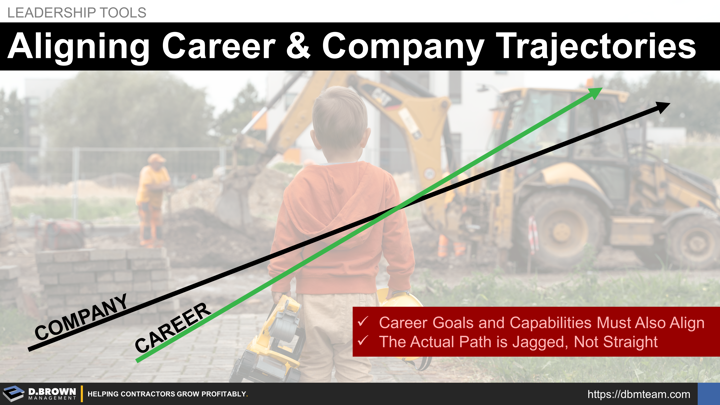There will never be perfect alignment between the trajectories of the company and the careers of the people that make up the company.
The trajectories are rarely straight lines as most follow a power-curve with growth accelerating in the later years, the opposite with lots of growth happening in the earlier years, and then flattening out over time. Typically, with the latter, it is due to aptitude, desire, or a combination of the two. Both at the career and company level, there are decisions to be made at each stage of growth.
While the trajectories over time will follow some consistent line or curve, the path along the way is often jagged.
Lastly, most people are horrible self-evaluators of where they are at on their journey or what their trajectory really is. Learn more about the Dunning-Kruger effect with this five-minute video.
What Do You Do?
There are no magic solutions. Here are a few quick tips:
- Everyone is leading their own careers and lives. The first thing to do is to get objectively clear about your own trajectory-to-date, your current capabilities, your aptitudes, your desires, and your discipline. Take an objective inventory. Engage others that you trust to provide you feedback. With that in hand, you can plot out your likely future trajectory.
- Get clear about your boundaries and why. For example, would you prefer to curtail your trajectory some in exchange for security, compensation, working with certain people, in a certain location, etc.?
- If you are leading the company, you must do a similar exercise for how you see the business answering 1 & 2, as well as looking at how those answers compare to your personal career trajectory. For example, is your desire for growth beyond your aptitudes? Would growth of the business pull you further away from the work that you really enjoy doing? Assuming you personally have the aptitude, desire, and discipline for growth, how much would you slow that growth down for some of your current key team members who may not have the same trajectory?
- Get comfortable with your own trajectory - not your relative position to others. True wealth comes from being comfortable with who we are, what we do, and why we do it. Perhaps you love doing a particular type of work in the business. At one stage of growth, this was a direct report to the Owner/President but at another stage of growth, this may not be best organized under a different manager. You are still playing on the same team, doing work you love, and contributing value. Don't get caught up in what others are doing. Managers and leaders influence how people think about this.
Our best performing clients have low turnover at the management level combined with continuous changes to their organizational structures. The organizational structure is no different than a sports play, it is just about putting the right person in the position that will most help the team win in that moment. That changes with every stage of growth, for development of people, changes in the market (choices and experiments), and changes in the people.

